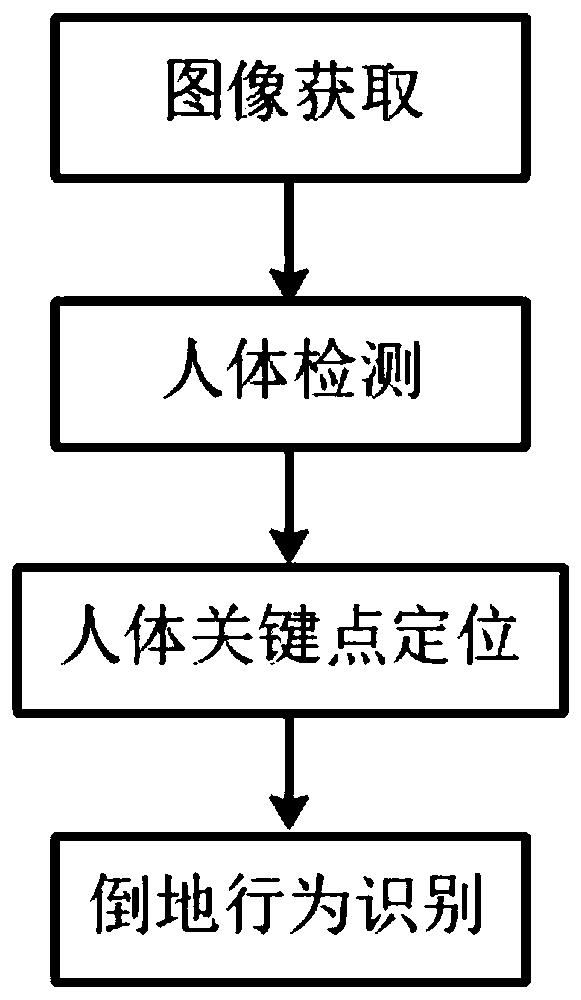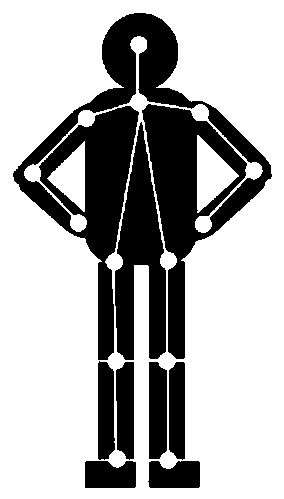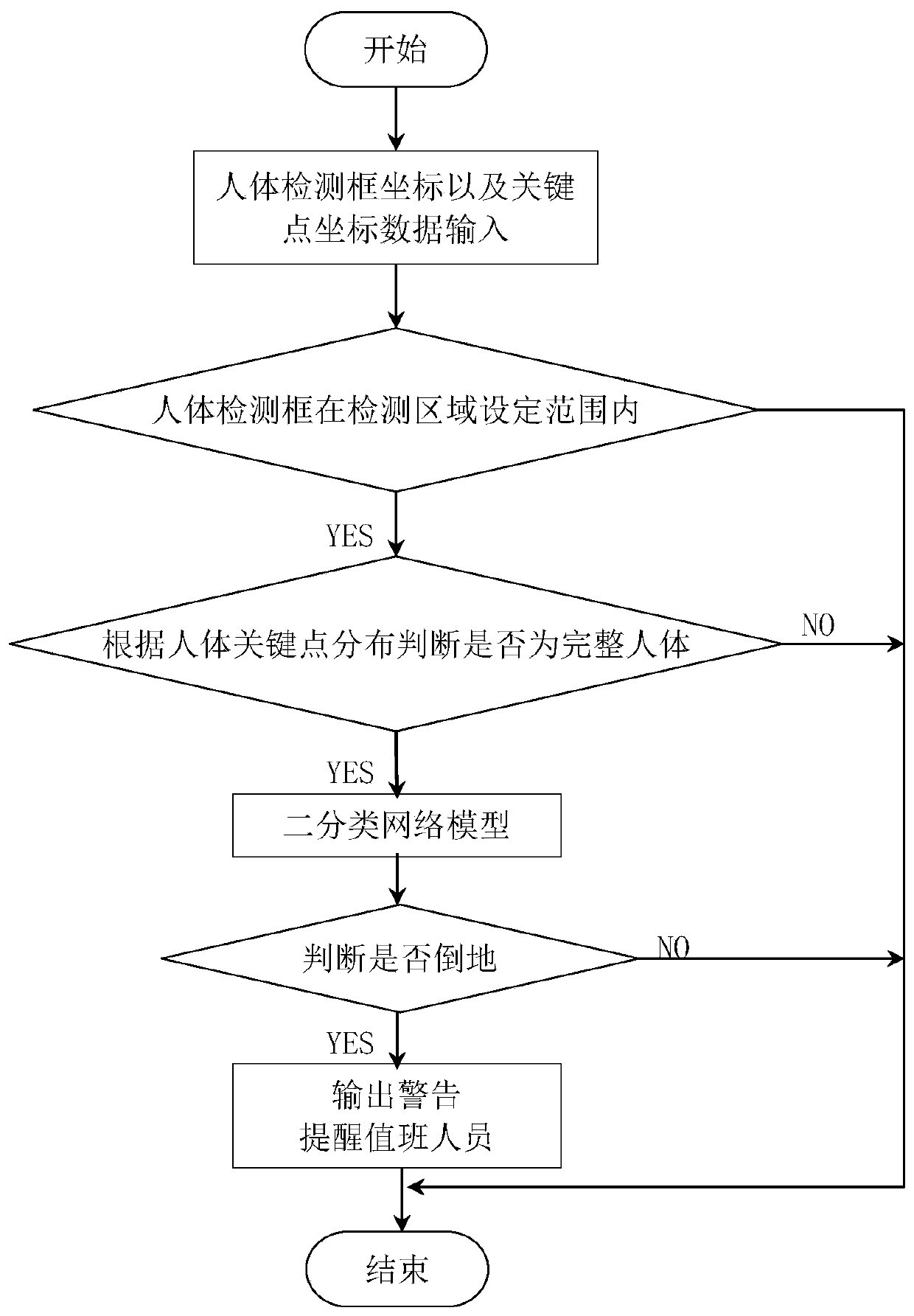Falling abnormal behavior identification method based on law enforcement and case handling area scene
A recognition method and scene technology, applied in biometric recognition, neural learning method, character and pattern recognition, etc., can solve the problems of inability to accurately recognize falling behavior and easy false detection, so as to avoid false detection and reduce false detection rate. , improve the recognition effect
- Summary
- Abstract
- Description
- Claims
- Application Information
AI Technical Summary
Problems solved by technology
Method used
Image
Examples
Embodiment Construction
[0038] The following will clearly and completely describe the technical solutions in the embodiments of the present invention with reference to the accompanying drawings in the embodiments of the present invention. Obviously, the described embodiments are some of the embodiments of the present invention, but not all of them. Based on the embodiments of the present invention, all other embodiments obtained by persons of ordinary skill in the art without making creative efforts belong to the protection scope of the present invention.
[0039] This technical solution proposes a detection method based on key points of the human body, and its overall algorithm includes three parts: human body detection, key point positioning of the human body, and classification model. According to the overall recognition steps, it can be divided into four parts: two-dimensional image data acquisition, human body detection based on deep learning, human body key point positioning, and falling behavio...
PUM
 Login to View More
Login to View More Abstract
Description
Claims
Application Information
 Login to View More
Login to View More - Generate Ideas
- Intellectual Property
- Life Sciences
- Materials
- Tech Scout
- Unparalleled Data Quality
- Higher Quality Content
- 60% Fewer Hallucinations
Browse by: Latest US Patents, China's latest patents, Technical Efficacy Thesaurus, Application Domain, Technology Topic, Popular Technical Reports.
© 2025 PatSnap. All rights reserved.Legal|Privacy policy|Modern Slavery Act Transparency Statement|Sitemap|About US| Contact US: help@patsnap.com



